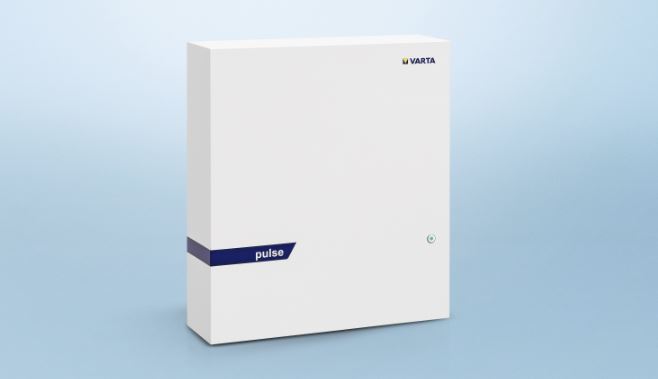While estimates as to shipped residential energy storage volumes in 2017 and forecasts for 2018 vary greatly between sources, few doubt that the market segment is on the verge of rapid expansion. New business models and uses cases for distributed storage, such as in VPPs or as a component of home automation are also evolving fast.
Germany’s Varta Storage is the latest supplier attracted to the Australian market, and Gordon Clement, Varta’s GM Power and Energy says that he considers the installer “the most important person in the supply chain.”
Varta is holding a launch event tonight in Melbourne’s Docklands, where it will present its pulse 3 and pulse 6 energy storage systems to installers and wholesalers, alongside government and utility representatives. The event will include live installations of the Varta system, which Clement points to as being one of the key differentiators for the supplier.
“It is extremely easy to install – less than half an hour or closer to 15 minutes,” Clement told pv magazine Australia. “That does depend on the cabling being available. But it is a plug-and-play system, one box, truly integrated, no requirement for external components except for the current sensor.”
Varta market information from Germany, it reports having captured around 12% market share in Germany, Austria and Switzerland combined, shows that when an installer recommends a Varta system to a homeowner, that in around 70% of cases it results in a sale. This makes installation speed and ease key.
Besides its light weight and ease of installation, Varta also reports that its software is an “open system”, allowing for upgrades and making it compatible with storage system aggregators in the future.
“The future proofing is a big advantage for the end customer,” said Clement. “It is a relatively big decision [for a householder to buy storage], so it can’t become obsolete. We’ve made it as upgradable as possible through Varta and through third parties, and through third parties that we don’t know about right now, with features still to come.”
The ability for utilities or third parties to aggregate residential battery storage systems as to supply peak demand on the electricity network or for the provision of grid services is something Clement sees as being “quite advanced” in Australia, and an opportunity Varta is open for, he reports.
“We are already approved or qualified for one and will as soon as possible be Reposit ready,” said Clement. “Our strategy is to line up with the software systems around, so that anyone with systems can line up with those that offer the best deal.” He also points to the emerging area of home automation as also being one in which “open” storage systems such as Varta can play a central role in the future.
“The home automation revolution hasn’t really happened yet,” said Clement. “From Varta’s perspective, we want to position the energy storage at the heart of that system. We want to make sure our system is as compatible as possible with those systems, which we expect to see more of the in future.”
At present, Varta plans to assemble all of its residential storage systems for the Australian marketplace in Bavaria, Germany. In future, it could potentially move its Australian-market production to Indonesia, where its parent operates a battery factory.
Varta Storage’s pulse 3 and 6 units come in 3.3 kWh and 6.5 kWh respectively. They cannot be currently be ‘islanded’, to provide backup power in the event of a blackout, with that feature to be added with a new inverter in 2019. It plans to supply installers via existing wholesalers and distributors.
This content is protected by copyright and may not be reused. If you want to cooperate with us and would like to reuse some of our content, please contact: editors@pv-magazine.com.









By submitting this form you agree to pv magazine using your data for the purposes of publishing your comment.
Your personal data will only be disclosed or otherwise transmitted to third parties for the purposes of spam filtering or if this is necessary for technical maintenance of the website. Any other transfer to third parties will not take place unless this is justified on the basis of applicable data protection regulations or if pv magazine is legally obliged to do so.
You may revoke this consent at any time with effect for the future, in which case your personal data will be deleted immediately. Otherwise, your data will be deleted if pv magazine has processed your request or the purpose of data storage is fulfilled.
Further information on data privacy can be found in our Data Protection Policy.